FSJ Cooling Notes
Return to Home
Return to Resources
Return to FSJ Page
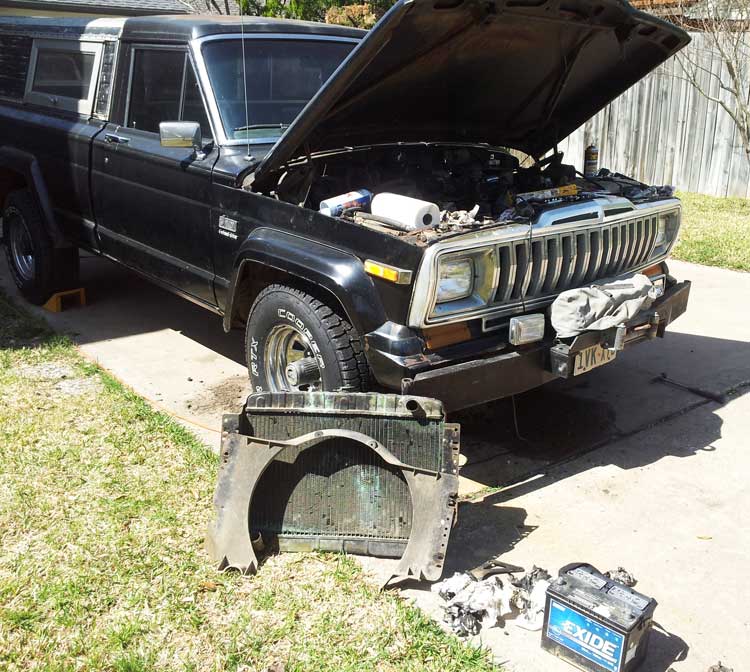
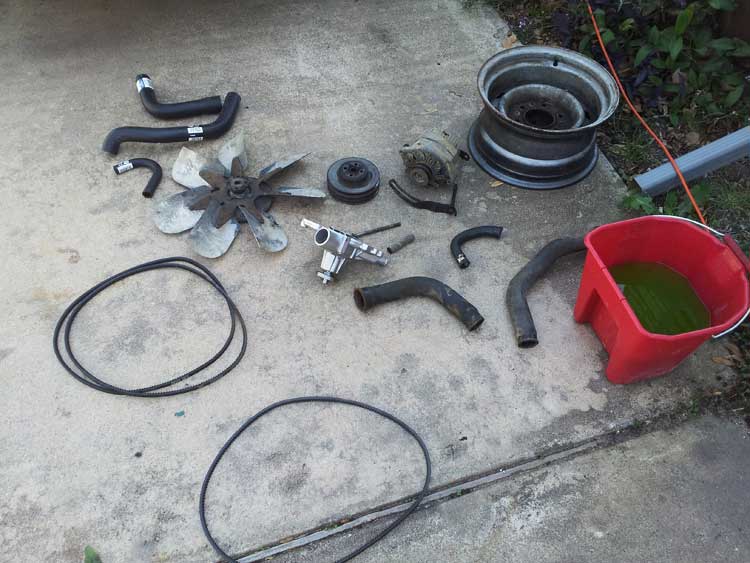
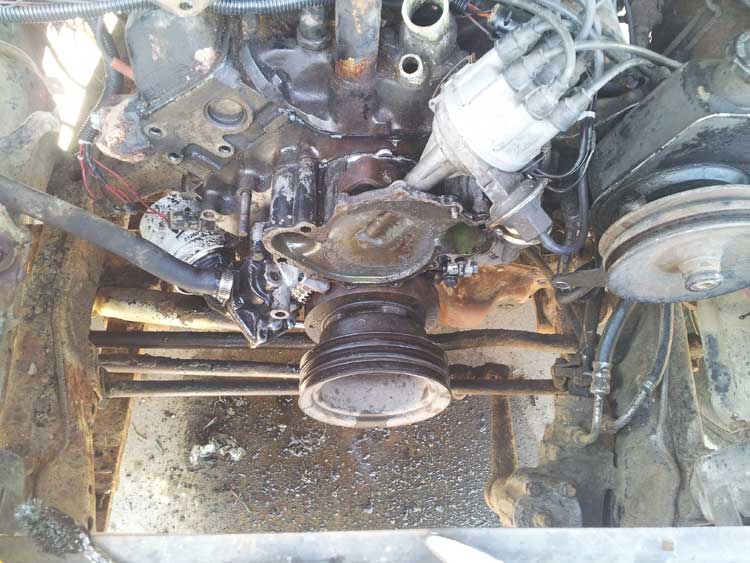
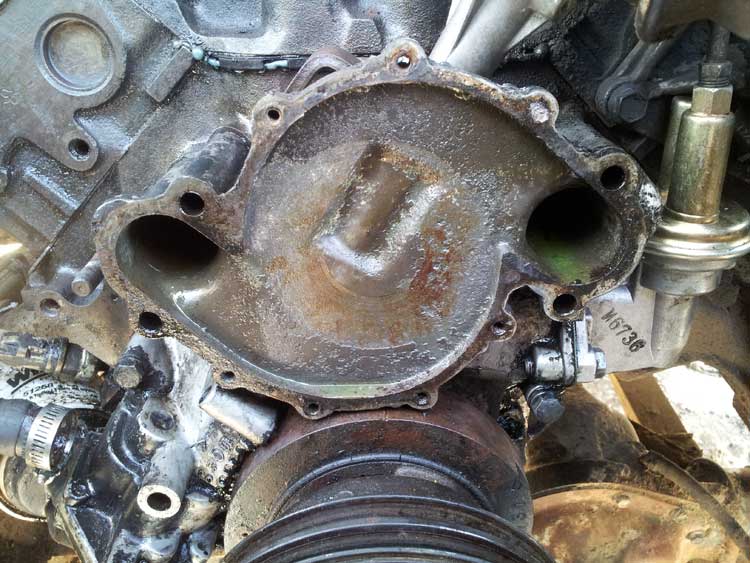
- Radiator: Make sure the radiator has been flushed and is clean. Mine drained with a noticable amount of rust and brown residue. Vinegar is a good inexpensive solution for cleaning rust and ensure the radiator passages are open. You could fill the entire cooling system with vinegar and let it sit for 24 hours, then run engine until it warms up then stop and drain the radiator.
- Thermostat: The stock thermostat is 195 degrees Fahrenheit, which means it starts opening around 195 and is usually fully open 40 degrees above that for maximum coolant flow. Some people run a 180 degree thermostat to lower the operating temperature and ensure that the engine doesn't get beyond 220 degrees rather than 240 with the stock thermostat, but this doesn't necessarily solve overheating problems if the engine tends to heat up past 240 degrees. Be careful what water pump is selected because high flow water pumps are known to cause problems when used in conjunction with standard flow thermostats. The high flow causes the thermostat to react too quickly and creates an oscillating open and shut behavior rather than regulating at a steady temperature. If you decide to use a high flow water pump then probably will need to consider replacing the thermostat with a high flow type designed to work with the water pump. I do not have any personal experience with this but I think it is useful to mention the general information that I have gathered from reading forums. Also be aware of failure symptoms for thermostats. A stuck open thermostat will prevent the engine from warming up quickly or attain normal operating temperature. A stuck closed thermostat will cause the engine to overheat quickly and you shouldn't drive around with this issue.
- Water pump: I used a standard stock water pump replacement for my FSJs. I don't do any towing with the rigs. As stated earlier with thermostats, be aware of possible implications with choosing a high flow water pump.
- Fan clutch: Here in Texas, I prefer to replace the standard or heavy duty fan clutch with an extreme duty fan clutch to maximize the fan speed without going electric and upgrading the alternator to support the additional power draw. The Hayden 2797 clutch is an excellent choice that has worked well for me on the Wagoneer and J10. The only downside is the mount holes do not align with the stock holes, but that can be easily remedied with an angle grinder or dremel to cut the holes into notches.
- Temperature sender: Don't assume the sender is accurate in the first place. I've experienced failed or flaky temperature senders on both of my FSJs. The sender is located near the distributor on the engine manifold as shown in the following picture.
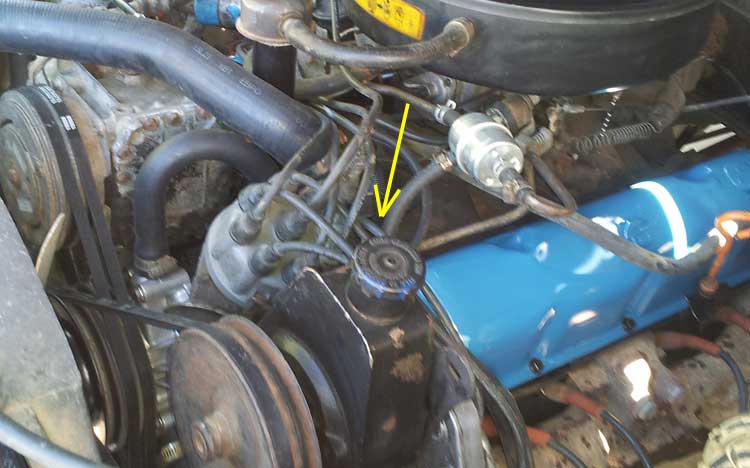
- Temperature gauge: This is the thingmajig in the dash that tells you if the engine is running at optimal temperature or about to melt down so you definitely want to make sure it is accurate! These old analog gauges rely on a little bimetallic strip with a coil of wire around the strip that heats up depending on the current flowing through it. The strip bends its shape when heated up and moves the gauge pointer. When the resistance of the sender lowers as engine temperature goes up, the strip heats up more and moves the gauge from one end to the other. On top of that, there is a second bimetallic strip inside the temperature gauge that acts as a pretty crude bang-bang voltage regulator to reduce 12V to about 5V for all the gauges in the dash. If none of your gauges work then this regulator has failed most likely due to a burned out coil. Some people have recommended replacing the regulator with a solid-state DC regulator such as a 7805, but it has some noteworthy downsides and problems. The first problem is the 7805 will literally output exactly 5V so at start up, all the gauges will be slow to respond and settle to the correct indication on the order of 10-20 seconds. When using the original built-in bang-bang regulator, all gauges move more rapidly and settle to the correct position within a couple seconds. The second and very important downside is the coolant temperature gauge tended to move towards overheating despite an IR temperature gun on the radiator showing perfect 195-200 degrees. Sometimes the gauge will start acting erratically with no correlation to reality whatsoever. Replacing the gauge and ditching the 7805 regulator in favor of a NOS replacement fixed this problem!
- Carburetor: Make sure the carburetor is tuned up for correct fuel-air mix delivery. Look up some pictures online for reading spark plugs. They do come in handy and you want to see some hint of gray on the white ceramic center of the plugs. I was seeing shiny white plugs on my J10 so the engine was running very lean and that contributes to running hot. I had a lot of problems with vacuum leaks in my FSJs causing the engine to run very lean. On the J10, the PCV valve happened to be missing! Other symptoms of vacuum leaks are rough idle and difficulty tuning the base idle below 1000 RPM for the 360 V8. Rebuilding the carburetor is probably a good idea if you suspect issues with it. It also provides the opportunity to verify the jets are sized properly for the engine. My J10 has the stock size 55 jets that determines the fuel mix during cruising. The two idle mix screws on the carburetor only determine the fuel air mix at idle.
- Fan shrould: FSJs with the 360 V8 definitely should have a fan shroud to ensure cooling at idle with the A/C. The shroud doesn't really help a whole lot for highway driving. You can make your own fan shroud based on my notes here.
- Exhaust: Last but not least, the exhaust system should not be clogged. There are a couple potential failure points that could result in a constricted exhaust system, but not bad enough to cause noticable engine performance issues. CFirst, catalytic converters are known to clog up and if you don't need one then get rid of it. Second, check the heat riser valve!!! After 13 years of ownership, I experienced a heat riser valve failure that resulted in a very odd overheating symptom. When started cold, the engine would warm up to normal operating temperature at which point the cooling system kicks in, coolant circulates from the block through the pump and radiator, using an IR temperature gun on the upper radiator hose would show the expected ~200 degree operating temperature for 10-15 minutes. Leaving the engine idling for as long as 30 minutes would not show any overheating symptoms. Only until the Jeep is put in gear and driven, the temperature would slowly creep up to the red band (240-260 degrees) after about 15-20 minutes of driving and never recover, the radiator will boil over when the engine is turned off. The culprit of this mysteriously delayed overheating condition that occurs only when driving or revving the engine for a long time was a failed heat riser valve. Apparently the valve was installed upside-down on my Wagoneer. The heat riser is a valve on the right side exhaust manifold that is intended to be closed when cold to provide some exhaust back pressure to aid in warming up the engine faster and warm the cold air intake to the carburetor. The valve is supposed to open up when hot, a temperature sensitive spring would soften and there is a counterweight on the valve that is supposed to fall down to open the valve fully to allow exhaust gasses to exit without restriction. On my Wagoneer, the valve was fully closed upside-down and would open if the weight was manually pushed upward. I do not know how I never saw this problem for over a decade, but my guess is it was lodged in the upright open position and I hit a bad pothole and knocked it down shut. Even if yours is installed correctly, chances are it could have gotten stuck or does not open freely causing exhaust backpressure and subsequent delayed overheating. Check this before you replace your engine!!! I had a mechanic attempt to upsell me a replacement engine, and sadly if I had gone with that suggestion, the overheating problem would have persisted if they reused the exhaust manifold and faulty heat riser valve!